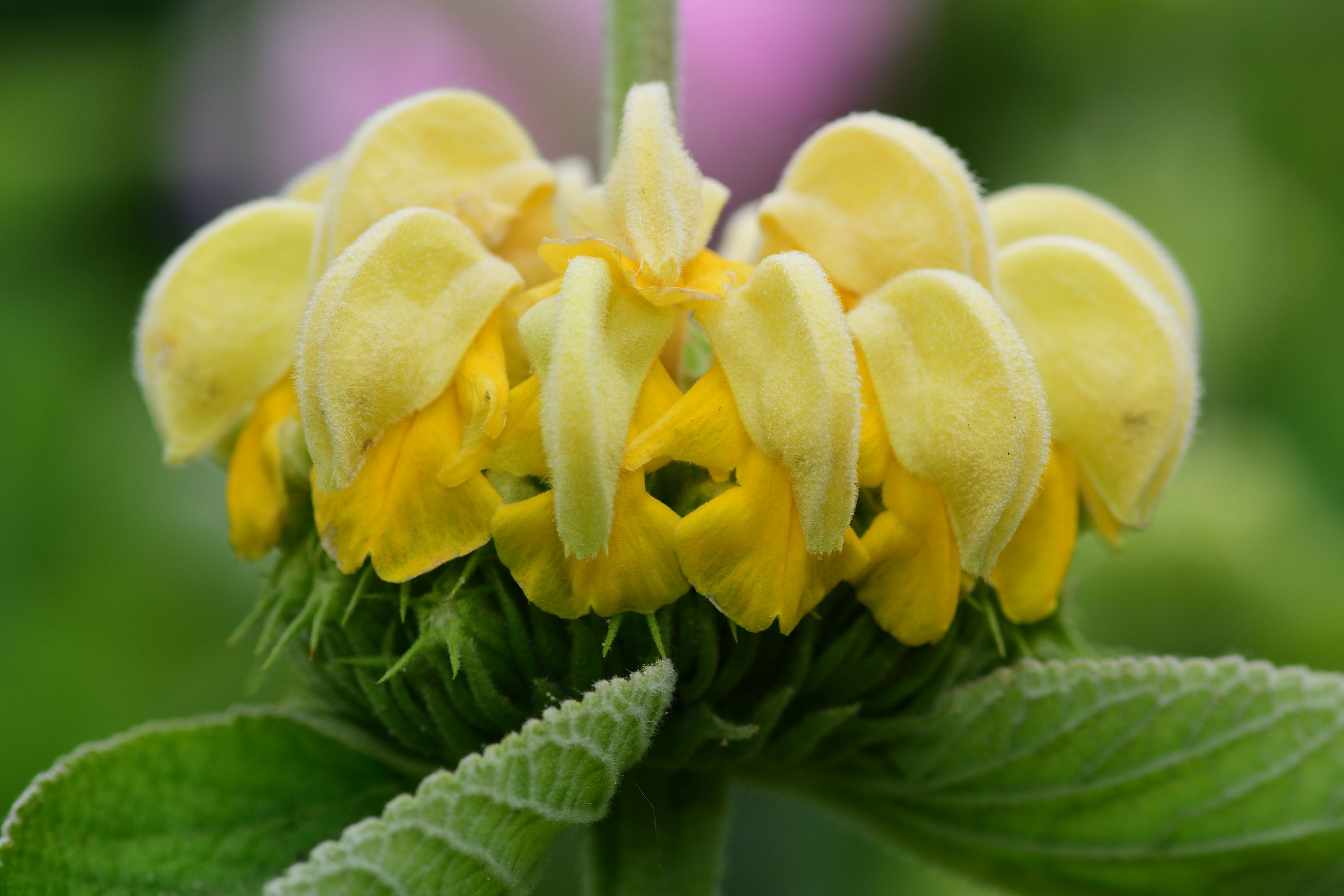Turkish sage
(Phlomis russeliana)

Description
Phlomis russeliana, commonly known as Turkish sage or Jerusalem sage, is a hardy perennial plant native to the Middle East, Central Asia, and the Caucasus region. It is a member of the Lamiaceae family, which includes other popular garden plants such as mint, lavender, and sage. With its attractive foliage, striking flowers, and medicinal properties, Phlomis russeliana has become a popular addition to gardens around the world. In this article, we will explore the various aspects of this fascinating plant. Description Phlomis russeliana is a clump-forming perennial with a woody base and upright stems that can reach up to 3 feet in height. Its leaves are large, grayish-green, and heart-shaped with a fuzzy texture that helps to protect them from the sun. The leaves are arranged in opposite pairs along the stem, and their size and shape vary depending on their position. The lower leaves are larger and more rounded, while the upper leaves are smaller and more elongated. The flowers of Phlomis russeliana are one of its most striking features. They are arranged in whorls around the stem, with each whorl consisting of several small, tubular flowers. The flowers are usually a pale yellow color but can sometimes be pink or purple. They bloom in early summer and can continue to bloom sporadically throughout the season. Habitat and Distribution Phlomis russeliana is native to a wide range of habitats, including rocky slopes, meadows, and woodland edges. It is found throughout the Middle East, including Turkey, Iran, and Syria, as well as parts of Central Asia and the Caucasus region. Cultivation and Propagation Phlomis russeliana is a hardy plant that is easy to grow and care for. It prefers well-draining soil and full sun but can also tolerate partial shade. The plant is drought-tolerant, making it an excellent choice for gardens with low water availability. It is also deer-resistant, which makes it a popular choice for gardeners living in areas with high deer populations. Propagation of Phlomis russeliana is typically done through seed or division. Seeds can be sown in the spring or fall, and germination usually takes two to three weeks. Division can be done in the spring or fall by carefully digging up the plant and separating it into smaller clumps. Uses Phlomis russeliana has a long history of medicinal use, particularly in traditional Persian medicine. The plant contains several compounds, including flavonoids and tannins, that are believed to have anti-inflammatory and antioxidant properties. In addition to its medicinal uses, Phlomis russeliana is also used in the culinary world. The leaves have a slightly bitter flavor and can be used to flavor soups and stews. The flowers are edible and can be used to decorate salads and other dishes. In the garden, Phlomis russeliana is valued for its ornamental qualities. Its striking flowers and attractive foliage make it a popular choice for borders and rock gardens. The plant is also known for its ability to attract bees and other pollinators to the garden. Conclusion Phlomis russeliana is a fascinating plant with a long history of medicinal and culinary use. Its hardy nature, striking flowers, and attractive foliage make it a popular choice for gardeners around the world. Whether you are looking to add a new plant to your garden or are interested in exploring its medicinal and culinary uses, Phlomis russeliana is a plant worth getting to know.
Taxonomic tree:







